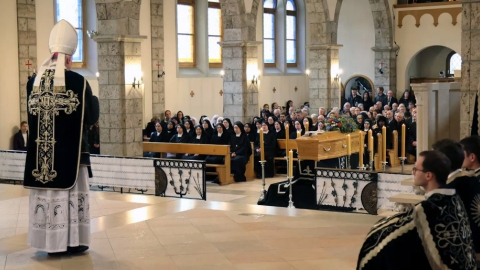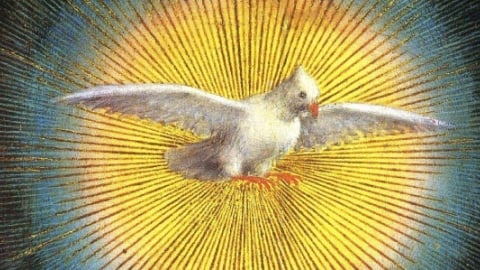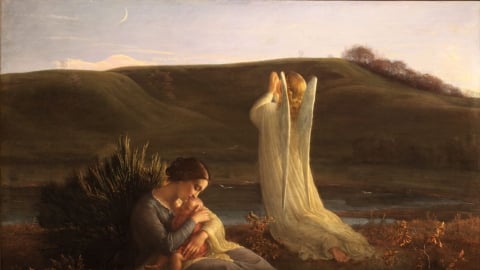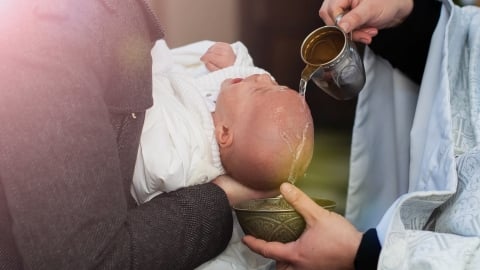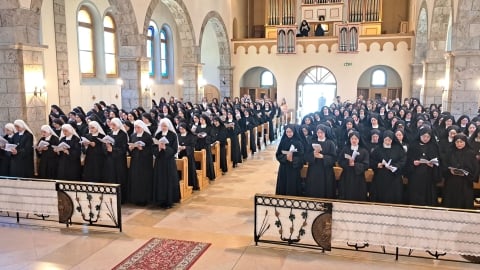The Significance of Tenebrae

We offer some words about the great Divine Office of Tenebrae, a combination of the canonical hours of Matins and Lauds offered in a special manner on the mornings of the Sacred Triduum (Holy Thursday, Good Friday and Holy Saturday), as well as photo gallery.
See also: The Office of Tenebrae: an explanation
The night office of Tenebrae
The following excerpt comes from Fr. Goffine’s The Church’s Year. It should be mentioned that as Fr. Goffine wrote his work prior to Pius XII's Holy Week Reform (published in 1955), which thankfully restored the intended times for observing the various rites. The term "evening" now refers to the night hours (as he alludes to the ancient practice)—thus the first and darkened hours of the new day before the dawn of morning. While this practice is typically observed in monastic communities (at about 3 o’clock in the morning), this is not usual in a parish—or even a seminary or a cathedral—and thus Tenebrae is more commonly said in the early morning hours (about 7 o’clock).
Why is the Tenebrae said in the evening?
In memory of that time when the early Christians spent the whole night preceding great festivals in prayer, but later, when zeal diminished, it was observed only by the clergy on the eves of such festivals; also in order that we may consider the darkness, lasting for three hours, at the crucifixion of Christ, whence the name Tenebrae; and lastly, to represent by it that mourning, of which darkness is the type.
Why, during the prayers of the clergy, are the lights in the triangular candlestick extinguished one after another?
Because the Tenebrae, as has been already remarked, in the earliest times of the Church, were held in the night, the candles were extinguished one after another, as the daylight gradually approached they were no longer, necessary; again, at the time of the passion and death of Jesus, His apostles whom He calls the light of the world, one, after another gradually left Him; at the death of Christ the earth was covered with darkness. The Jews, blinded by pride, would not recognize Christ as the Savior of the world, and therefore fell by His death into the deepest darkness of hardened infidelity.
What is meant by the last candle which is carried lighted behind the altar, and after prayers are finished, is brought back again?
This candle signifies Christ; who on the third day came forth from the grave, by His own power, as the true light of the world, though according to His human nature He died and lay in the grave until the third day.
Why is a noise made with clappers at the end of the Tenebrae?
This was formerly a sign that service was over; it also signifies the earthquake which took place at Christ's death.
Some explanations about Tenebrae
We offer here a couple of extracts from The Catholic Encyclopedia to explain the significance of the ceremonies of Tenebrae.
...the Office of these three days was treated as a sort of funeral service, or dirge, commemorating the death of Jesus Christ. It is natural also that, since Christ by convention was regarded as having lain three days and three nights in the tomb, these obsequies should have come in the end to be celebrated on each of the three separate occasions with the same demonstrations of mourning."
There can be no reasonable doubt that it was from the extinguishing of lights that the service came to be known as Tenebrae, though the name itself seems to have arisen somewhat later.
...the tone of the whole Office, which seems hardly to have varied in any respect from that now heard in our churches, is most noticeably mournful—the lessons taken from the Lamentations of Jeremias, the omission of the Gloria Patri, of the Te Deum, and of blessings etc., all suggest a service cognate to the Vigiliae Mortuorum [Vigil of the Dead], just as the brilliant illumination of the Easter eve spoke of triumph and of joy, so the darkness of the preceding night's services seems to have been designedly chosen to mark the Church's desolation."
